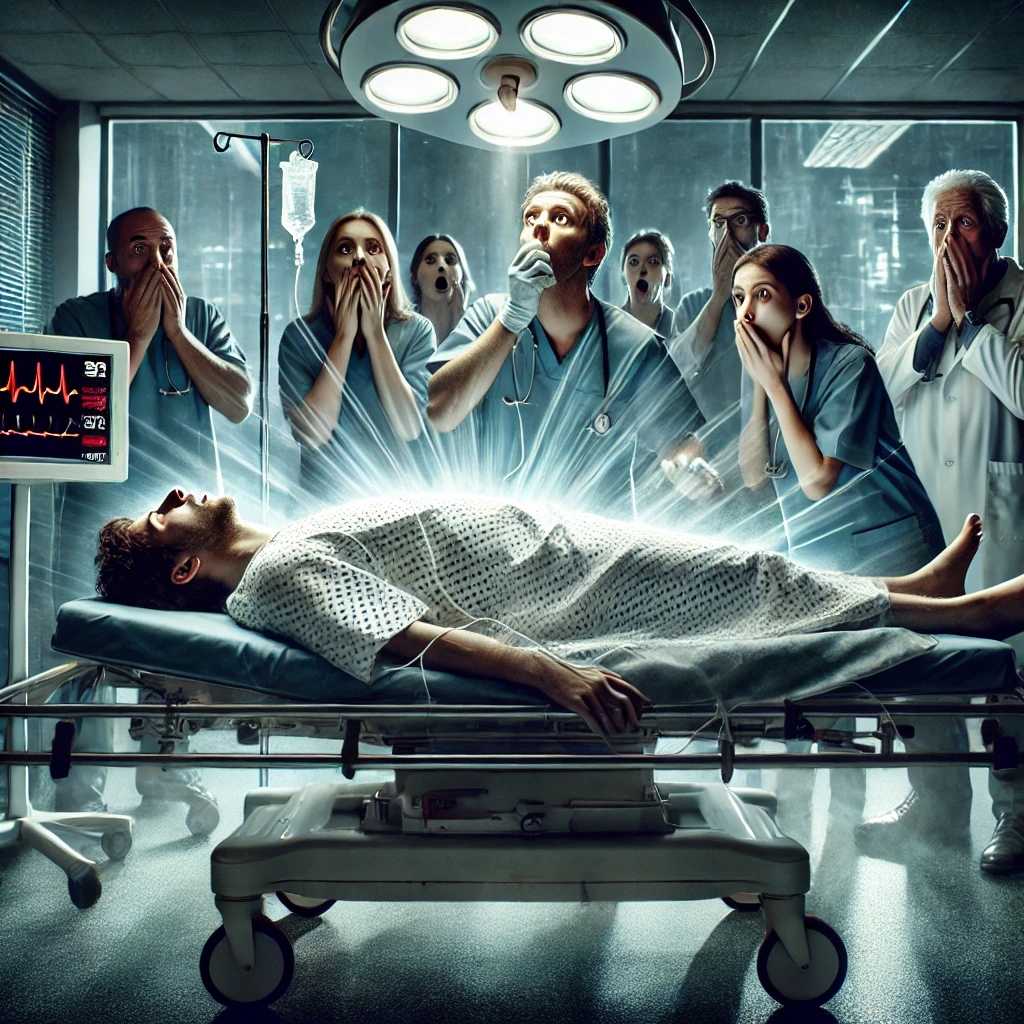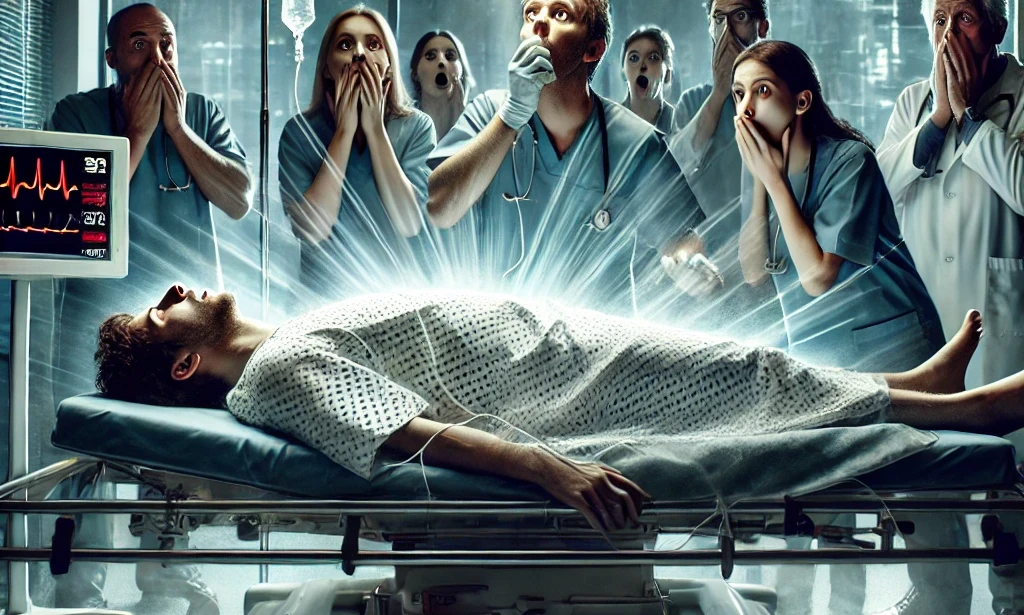From people waking up after being declared dead to spontaneous musical concerts inside the brain, the human body continues to surprise even the most seasoned doctors and neuroscientists. These strange and rare conditions defy logic and often leave science scratching its head. Buckle up for a fascinating journey through eight of the weirdest, most unexplainable phenomena ever recorded in medical history.

8. The Lazarus Phenomenon: When the Dead Come Back to Life
Imagine being declared dead—only to come back to life minutes or even hours later. Sounds like a zombie movie, right? But it’s real, and it’s called the Lazarus Phenomenon.
Here’s what happens: after a person’s heart stops, doctors attempt resuscitation using CPR or defibrillation. If all efforts fail, they pronounce the time of death and stop all interventions. Then, in a truly bizarre twist, the heart starts beating again on its own.
Scientists theorize that the buildup of pressure in the chest during CPR might play a role. When compressions stop, the pressure slowly releases—similar to uncorking a bottle—potentially jumpstarting the heart again.
There have been at least 65 documented cases, most involving individuals over 60.This mystery has led some hospitals to wait longer before officially declaring death, acknowledging that sometimes, death isn’t as final as we thought.
7. Acquired Savant Syndrome: A Knock to the Head Unlocks Genius
Now, imagine waking up a musical or mathematical genius after a head injury. It’s called Acquired Savant Syndrome, and while it sounds like science fiction, it's a verified (though extremely rare) phenomenon.
Take Derek Amato, who hit his head in a swimming pool and suddenly started playing the piano like a prodigy—despite never having played before. OrJason Padgett, who developed a sudden ability to visualize complex mathematical patterns after a mugging.
Scientists believe the brain may unlock latent talents when certain areas—especially on the left side—are damaged. The right hemisphere then compensates, tapping into hidden capabilities.
Although rare, these stories spark a tantalizing question: What hidden talents might be locked inside our brains, waiting for the right key?
6. Super Recognizers: Human CCTV Cameras
Most of us forget the faces of people we pass on the street, but super recognizersare wired differently. These individuals can remember up to 95% of facesthey've seen—even years later, and even if the person’s appearance has changed.
Imagine walking into a coffee shop and recognizing someone who stood behind you in line five years ago—right down to their latte order.
Law enforcement agencies now recruit super recognizers to scan hours of surveillance footage. Their brains function like facial recognition software, with increased activity in areas linked to visual memory.
The exact reason for their ability is still unclear. Scientists know which brain regions are more active but still can’t explain why some people are born with such incredible facial recall.
5. Exploding Head Syndrome: Nighttime Brain Fireworks
You’re about to fall asleep when suddenly—BANG!—a loud explosion blasts inside your head. No, it’s not real. You’re experiencing Exploding Head Syndrome.
This sleep-related condition involves hearing loud, phantom noises—like crashes, thunderclaps, or cymbal crashes—as you'redozing off. Some people even see flashes of light or feel muscle twitches.
Researchers think it happens during the brain’s transition from wakefulness to sleep, possibly due to misfiring neurons. While it sounds terrifying, it’sharmless.
About 10% of people who experience it also get visual hallucinations. Think of it as your brain's strange attempt at making bedtime more entertaining—or maybe just trying out for a sound design gig in Hollywood.
4. Musical Ear Syndrome: When Your Brain Plays Its Playlist
Imagine sitting in silence and suddenly hearing an entire orchestra playing in your head—no radio, no earbuds. Welcome to Musical Ear Syndrome.
Unlike tinnitus, which is often just ringing or buzzing, this condition produces full songs and musical arrangements. People hear familiar tunes, jingles, or even symphonies—clear as day, and in perfect harmony.
It often occurs when external sound input is reduced—like in people with hearing loss. Scientists believe the brain compensates by “filling the silence” with internal audio.
Though more common in those with deep musical experience, anyone can experience it. Think of it as your brain turning into a phantom jukebox—with no off switch.
3. Mirror-Touch Synesthesia: Feeling What Others Feel
Have you ever flinched while watching someone else get hurt? Now imagine feeling their pain. People with Mirror-Touch Synesthesia do just that.
When they see someone being touched, their brain registers it as if they are being touched. About 1.6% of people experience this daily.
Some even feel touched when they see the stroking of animals. It is as if their brain’s empathy function is dialed up to 11, blurring the lines between “me” and “not me.”
Scientists suspect it is due to hyperactive mirror neurons or a unique wiring of the somatosensory cortex. Fascinatingly, this condition might run in families - hinting at a genetic link.
2. Aphantasia: Living Without a Mind’s Eye
Try picturing your favorite beach. Can you see it? For those with Aphantasia, the screen is blank—no mental images whatsoever.
About 4% of people have this condition, often referred to as "mind-blindness." They can’t visualize faces, places, or even objects. Counting sheep to fall asleep? Not an option—there are no sheep.
Yet, many individuals with Aphantasia excel in memory and analytical thinking. They remember facts—like "Mom has green eyes, brown hair, and a mole on her left cheek"—instead of recalling a visual.
Some are even talented artists, capable of drawing incredibly detailed scenes despite never seeing them in their mind’s eye. Brain scans confirm they process imagery differently—but why this happens remains a puzzle.
1. Charles Bonnet Syndrome: When the Blind See the Unreal
When vision fades, the brain sometimes steps in and creates its wild images. This is Charles Bonnet Syndrome.
People with this condition often see hallucinations—dragons on sidewalks, medieval villages, or tiny people acting out plays. These visuals can be vivid, detailed, and incredibly bizarre.
Importantly, those who experience it know the images aren’treal. Scientists believe it’s a form of visual release hallucination, caused by under-stimulated parts of the brain becoming hyperactive.
Think of it as your brain acting like a bored artist, painting fantastical images on a blank canvas. While not dangerous, the unpredictability of what’s seen—from geometric patterns to cartoon parades—adds to the enigma.
Final Thoughts
The human brain and body are packed with mysteries that science still can't fully explain. These fascinating phenomena remind us that despite all our advances, much of what happens inside us is still uncharted territory. Whether it's brains inventing music or people waking from the dead, the real world continues to out-weird fiction.


You must be logged in to post a comment.